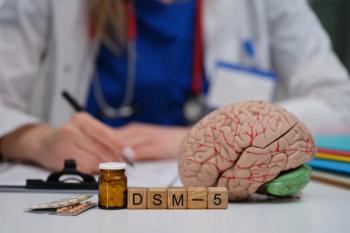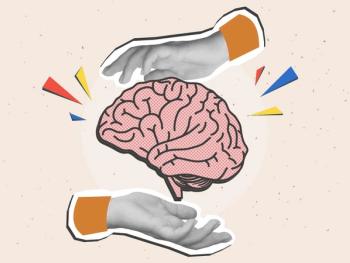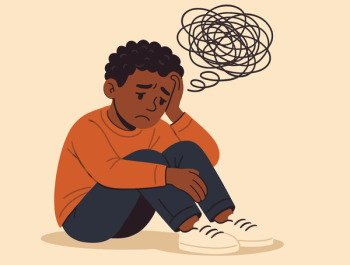
- Vol 31 No 9
- Volume 31
- Issue 9
Patient Resistance in Eating Disorders
Why do patients with eating disorders resist treatment? How can the clinician address resistance?
Eating disorders as classified by DSM-5 include diagnostic categories for anorexia nervosa, bulimia nervosa, binge eating disorder, avoidant restrictive feeding intake disorder, and feeding and eating conditions not otherwise specified. These are serious illnesses associated with numerous psychological and medical comorbidities, including increased risk of death.
Patients with eating disorders are notoriously difficult to treat and are also known to have high relapse rates. Resistance in eating disorders is common and can help explain why treatments often fail and why patients drop out. In general, resistance can refer to the conscious and unconscious factors that prevent a patient from engaging fully in the treatment process. Importantly, patient resistance is not uniform across the different eating disorder diagnoses, and how it is addressed also depends on the age of the individual.
Why patients with eating disorders resist treatment
Safety behaviors. Patients with eating disorders are typically terrified of weight gain and will go to great lengths to avoid this outcome. To decrease anxiety about weight gain, patients sometimes adopt behaviors that they believe will “protect” them from gaining weight-eg, scrutinizing body parts, daily weighing, following strict rules about when and how much to eat, and overexercising. Patients become highly invested in these safety behaviors, which results in decreased willingness to change them and increases therapeutic resistance.
Ego-dystonic vs ego-syntonic. Another key factor that affects resistance to change is whether patients view the disorder as ego-dystonic (ie, part of themselves) or ego-syntonic (ie, separate from themselves). Individuals who experience the behaviors associated with the eating disorder as problematic and incongruent with how they see themselves view their eating disorder as ego-dystonic; this view is typically endorsed in bulimia nervosa and binge eating disorder. As a result, these patients often want help because they are frustrated with unsuccessful weight loss attempts and are ashamed of their binge eating/purging behaviors. This desire for help leads to an improved therapeutic alliance and motivation to change.
In contrast, individuals with eating disorders who experience their behaviors as congruent with their personality and have a certain amount of pride in the ability to diet and exercise to extremes view the eating disorder as ego-syntonic. This ego-syntonic view is most often seen in anorexia nervosa. In most cases, when the eating disorder is experienced as ego-syntonic, there will be little or no motivation to change the behaviors, which results in high levels of treatment resistance that increases with time.
Ego-syntonic patients typically avoid therapy and will often attend only because of outside pressure (eg, to please a loved one). In these cases, it is extremely difficult to form a therapeutic alliance or to agree on goals for treatment. For example, these patients will be opposed to weight gain, although it is necessary in underweight patients with anorexia nervosa. This discrepancy in treatment goals between patient and clinician leads many patients to drop out of therapy, a common problem in anorexia nervosa.
Process and outcome resistance. In general, individuals with eating disorders resist treatment for many reasons. It can be helpful to both patient and clinician to understand and distinguish potential sources of process resistance and outcome resistance as an early step in the therapeutic process.1 Process resistance refers to resistance related to necessary changes for improvement and is associated with high levels of anxiety and discomfort. Examples of process resistance include gaining weight, eating more regularly, and eating larger amounts and/or foods that have been avoided. Outcome resistance, on the other hand, refers to concerns about the ultimate changes that will result once the behaviors and cognitions maintaining the eating disorder are no longer available to use as a coping strategy (eg, cannot binge as a coping strategy and may have to start attending to other unpleasant responsibilities in life that have been avoided because of the eating disorder).
While ultimately not helpful, these eating disorder behaviors and cognitions function as a temporizing measure in ways that the patient may or may not be aware of. For example, the individual with anorexia nervosa may not feel negative emotions as intensely while in a starvation state and thus, when eating normally, will need to learn to tolerate these emotional experiences. Most patients with an eating disorder struggle with both process and outcome resistance.
How a clinician can address treatment resistance
Young patients with low motivation. The options of how to proceed when encountering resistance will depend on the age of the individual and the type of disorder. Generally with
A pivotal intervention in the first session that is repeatedly modeled throughout the treatment process is externalization. Externalization allows parents to view their child’s firm resistance as part of the illness and not their child’s bad character. This separation allows the parents to focus on the task at hand (ie, re-nourishment) without getting sidetracked by the child’s verbal and nonverbal protests or by their guilt at making their child do something that is so distressing to him or her.
Patients endorsing motivation to change. When working with an adolescent or adult who is somewhat motivated to change her eating disorder behavior, individual therapy can be effective. However, recognition of the need to change behaviors and the ability and willingness to do the hard work to change them can be quite different. For example, patients with bulimia nervosa will often want to stop binge eating but are resistant to giving up the restrictive eating habits that lead to the binge eating episodes.
One helpful strategy to deal with this type of resistance is to begin by working with the patient to identify what she wants to change and/or work on. This step may seem basic, but it can be overlooked by therapists and replaced with a presumption that a patient with an eating disorder agrees with the therapist’s perspective and valuation. Achieving initial consensus on the goals of therapy and agreement to work on a particular problem/ behavior introduces a dialogue about how to achieve those goals.
In treatments such as cognitive-behavioral therapy, the first session is spent building a model illustrating how the eating disorder is functioning for the patient. The model includes behavioral, emotional, and cognitive maintaining processes and illustrates the cyclical and dysfunctional nature of the eating disorder. The model is a working document and can be revisited during every session. As a result, it can be used to help the patient learn more about her eating disorder cycle, evaluate the effects of her behaviors, and address resistance as it emerges. As treatment progresses, the model can be refined and elaborated, highlighting emerging targets for treatment.
One way to use this model is to ask the patient if the eating disorder is helping her accomplish the original goal-often this is related to improving self-esteem. In most cases, the co-created formulation will reflect that the behaviors and cognitions related to the eating disorder are not working and the model illustrates instead that the eating disorder is making her feel worse. This use of the model may be the first time that a patient is able to step back and see the difference between what she is doing and what she is trying to achieve.
Another strategy to help overcome resistance is Socratic questioning (ie, successive questions that progressively challenge the logic in a patient’s statements) about why the patient would want to continue to engage in eating disorder behaviors that are dysfunctional. For example, a patient may focus on the fact that vomiting makes her feel better immediately after a binge, although this is obviously a dysfunctional strategy because it undermines her self-esteem.
The Figure provides an example of a typical model that uses a cognitive-behavioral framework. If the patient wants to stop binge eating, the formulation created by the therapist and patient would clearly show the cause behind the desire to binge (eg, rigid rules around food) and what is required (eg, adopting flexible guidelines around meals instead of rules) to change the behavior. Once the patient understands this dilemma-it is up to her to determine how much she wants to stop binge eating. Is it worth changing the restrictive rules she’s created around food?
Rigid rules around food often serve as safety behaviors that theoretically “protect” from weight gain. If patients are unsure about wanting to change their rules around food, the therapist might help the patient explore this by generating a list of the costs and benefits associated with this behavior change. Finally, negative thinking about oneself often perpetuates disordered eating behaviors. A useful strategy to reduce resistance is to provide positive feedback and reinforcement (especially for younger patients) for any effort toward homework and attempts at behavior change. By modeling this consistently (ie, distinguishing between effort and outcome), patients can learn how to think more positively about themselves, which can give them the confidence to push forward.
Adult patients with low or no motivation to change. For adults with
Given the poor remission rates for patients with chronic anorexia nervosa, novel approaches sometimes focus on minimizing the burden of illness rather than attempting to bring about full weight and cognitive recovery. An example of a therapeutic goal that targets functional improvement that both patient and therapist can agree on would be minimizing harmful exercise practices that lead to injury.
Another example of a functional improvement target is cognitive inefficiencies that contribute to poor quality of life-for example, excessively rigid and detail-oriented thinking. Cognitive remediation therapy (CRT), a novel approach, focuses on improving meta-cognition (thinking about how thinking style affects everyday living), which increases flexibility and the ability to see “the bigger picture” while establishing a strong therapeutic alliance. CRT is intentionally designed to be nonthreatening and, thus, it is not focused on the eating disorder.
The goals of treatment are achieved by playing different games that challenge the particular inefficiencies common in anorexia nervosa. CRT can be used as an adjunctive treatment, and data suggest that when used in this way, it can lead to lower levels of treatment discontinuation.3 By using nonthreatening methods (ie, CRT), agreeing on the same therapeutic goals that do not directly challenge safety behaviors, and by working collaboratively, treatment can be moderated even in the most challenging group.
Conclusion
Treatment resistance in eating disorders is complex and manifests differently depending on diagnosis, patient age, and duration of illness. These factors can inform the clinician about the types of resistance they are likely to encounter and on potential strategies and treatment options that may be useful in overcoming these barriers. However, the role and content of resistance will vary in each case; it is important to understand how each patient views her symptoms and the perceived function they offer in the context of her life. This understanding will help the clinician conceptualize why the patient is resisting and how this resistance is likely to interact with specific symptoms.
Disclosures:
Dr Aspen is a Postdoctoral Research Fellow and Dr Darcy is an Instructor in behavioral medicine; Dr Lock is Professor of child psychiatry and pediatrics and Director of the Eating Disorder Program for Children and Adolescents in the department of psychiatry and behavioral sciences at Stanford University School of Medicine, Stanford, Calif. The authors report no conflicts of interest concerning the subject matter of this article.
References:
1. Burns D. Tools, Not Schools, of Therapy: Integrating Twelve Treatment Models. May 2013. http:// jackhiroseresources.com/post-one. Accessed August 6, 2014.
2. Lock J, Le Grange D. Treatment Manual for Anorexia Nervosa: A Family-Based Approach. 2nd ed. New York: Guilford Press; 2013.
3. Lock J, Agras WS, Fitzpatrick kk, et al. Is outpatient cognitive remediation therapy feasible to use in randomized clinical trials for anorexia nervosa? Int J Eat Disord. 2013;46:567-575.
Articles in this issue
about 11 years ago
Factors That Predispose Patients to Treatment-Resistant Depressionabout 11 years ago
Management of Treatment-Refractory Schizophreniaabout 11 years ago
Ketamine for Treatment-Resistant Unipolar Depression: Current Evidenceabout 11 years ago
Psychiatry’s Underground Economyabout 11 years ago
How I Got Schooled in Ancient Psychiatryabout 11 years ago
My Anniversaryabout 11 years ago
Sexualized Transference in Older Adultsabout 11 years ago
The Association Between Major Mental Disorders and Geniusesabout 11 years ago
Boyhoodabout 11 years ago
Roadblocks to Opiate AbuseNewsletter
Receive trusted psychiatric news, expert analysis, and clinical insights — subscribe today to support your practice and your patients.















